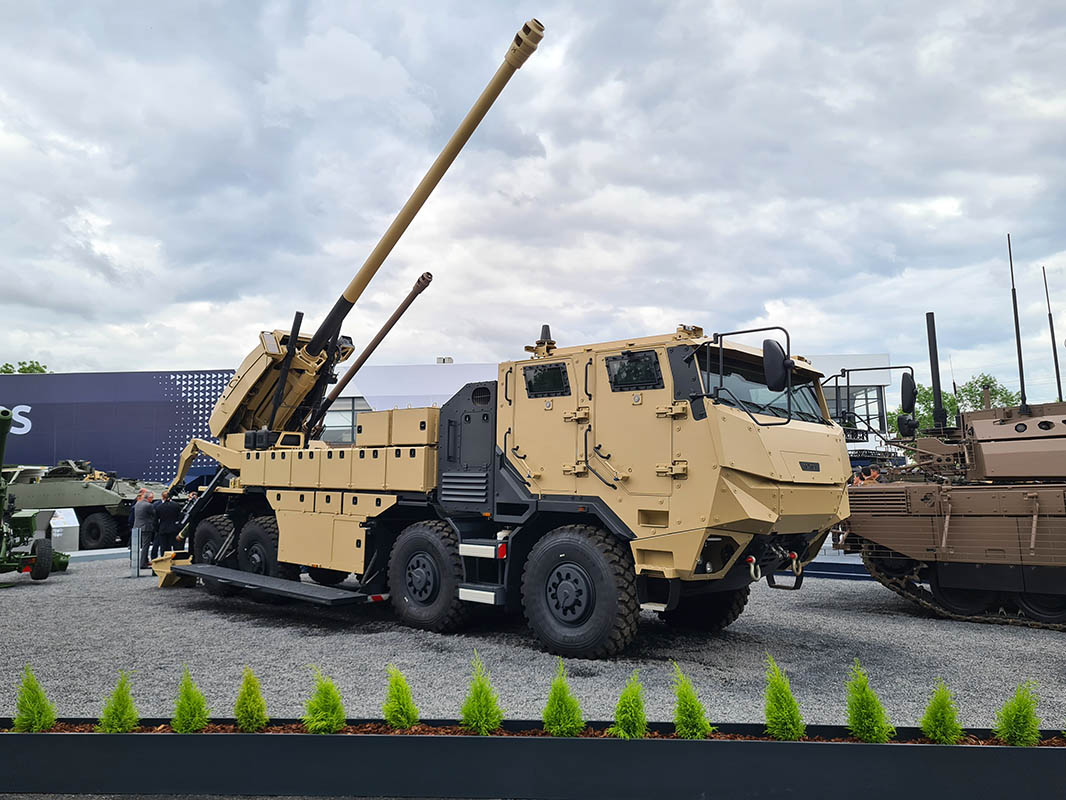Russia’s defence industry has seen a dramatic transformation since the 2008 ‘New Look Reforms’ and especially since Moscow’s full-scale invasion of Ukraine in early 2022. Once dependent on foreign machine tools and regular state orders, it is now operating under wartime conditions, massively expanding its missile, drone, and ammunition production. This article looks at how Russia has rebuilt its industrial base to sustain prolonged high-intensity warfare, and what that means for NATO and its allies.
In the wake of the Cold War, Russia’s defence industry contracted, as the country’s arms exports fell. The Soviet Union had accounted for 40% of the world’s conventional arms exports in the 1980s, and this had fallen to just 10% for Russia by 1996.(1) At the same time, 65% of Russia’s defence production was exported, with the federation’s own forces decidedly deprioritised amidst the pressures of the country’s economic collapse. Factories were left to decay and their staff released, no longer supported by state orders. The limited resources available to the Russian government were focused on those things that guaranteed security – the nuclear stockpile.
The Russian armed forces appeared to follow the trajectory of the country’s defence industry, struggling to deploy capable forces to Chechnya in 1994, and later succeeding in Georgia in 2008, but with many flaws that made clear the need for transformation. While the Russian forces were successful in Georgia, their organisation and readiness were sluggish. None of the services had integrated with each other, instead fighting their own battles simultaneously. Reconnaissance, communications, and airpower had all proven less effective than imagined and it was clear that change was needed.(2) The ‘New Look Reforms’ were initiated in October 2008, just two months after the war in Georgia had ended. They set out to revamp Russia’s equipment and restructure its forces, improving real-time reconnaissance and modernising the Soviet-era equipment to meet the conditions that dominated modern warfare.
In essence, the Russian forces were primarily expected to be capable of dealing with disruption at Russia’s borders and in the former Soviet Union. It was expected that brigade-sized formations would be sufficient for this task, especially if they could carry most of the required equipment. This led to the first boost in investment for the Russian defence industry for domestic orders since the early 1990s. Some growth in export had helped stabilise the Russian defence industry’s spiral, but was not enough of a demand to drive expansion. By 2008, the country exported USD 8 billion worth of conventional weapons, around four times the exports from 1996 and 23% of the global arms exports, placing Russia second behind the US.(3)
The year 2008 is noteworthy for another reason beyond the start of the New Look Reforms, and that is because it was essentially the last year of war for the Russian Federation until 2014. Previously, the country’s armed forces had been involved in at least one conflict every year since 1992, and the conclusion of counter-insurgency operations in Chechnya in March 2009 would bring that spell to an end. In order, Russian forces had fought in:
- 1991 to 1993: Georgian Civil War(4)
- 1991 to 1992: South Ossetian War (creating the conditions for the 2008 war)(5)
- 1992 to 1993: War in Abkhazia(6)
- 1992: Transnistrian War(7)
- 1992 to 1997: Tajikistani Civil War(8)
- 1994 to 1996: First Chechen War(9)
- 1996 onwards: Peacekeeping deployment in Serbia.(10)
- 1999: Peacekeeping deployment in Kosovo
- 1999: War in Dagestan (which led to the Second Chechen War)(11)
- 1999 to 2009: Second Chechen War(12)
- 2008: Russo-Georgian War

So, 2009 would bring relative calm and time to focus on modernisation. Most importantly for the Russian defence industry, it brought funding and the return of state orders for equipment. However, there were not enough funds to warrant any dramatic expansion and, to some extent, you could argue expansion was not needed. Russian forces had been involved in at least eight conflicts and had eventually muddled their way through them. There had been some painful setbacks and there was definitely a need for modernisation – especially where deterring NATO was concerned – but the timelines for modernisation under the New Look Reforms and the 2011–2020 State Armaments Programme were eminently achievable within the existing industrial footprint.(13) Modernisation was essential, with the Russian government estimating in 2013 that the defence industry would need at least USD 3 billion worth of computer numerical control (CNC) machine tools every year until 2017.(14)
The Russian defence industry went to Europe, the US, and Japan to meet its modernisation needs, buying between 35 and 60% of its CNC machine tools from those states between 2009 and 2017.(15) Many plants were able to modernise their production methodologies, such as the Serov Mechanical Plant, which produces shell bodies for artillery and mortars.(16) Some plants, like the Votkinsk and Almaz-Antey plants were almost entirely re-equipped with western CNCs, enabling the much more precise and accurate milling and machining of missile components. Some factories, like Stankomash, which produces a range of products from artillery ammunition to propellers for large ships, were almost completely built by European companies. A large number of Italian CNC providers, for instance, appear to have supplied machinery to the Konar company, essentially building a factory from scratch.(17)
This modernisation revived the Russian defence industry, and came with further partnerships to upgrade and improve Russian equipment. Thales was selected in 2007 to supply its Catherine series thermal imagers for Russian tanks, that would go on to equip most of Russia’s modernised armoured vehicles, with some form of domestic production also undertaken.(18) The defence industry continued in this way, modernising its own equipment and processes, and delivering at a modest pace to the Russian armed forces. Between 2005 and 2015, the increases in Russia’s defence budget outstripped its increases in GDP, with an average of 7.9% for the former, and 3.4% for the latter. That is, until the 2022 invasion of Ukraine.
A war economy
If Russia’s operations in the opening phases of the operation had gone as planned, and if Western states had not provided the equipment that they did, it is likely that Russia would have succeeded with many of its original goals. For instance, if the airborne VDV that initially seized Hostomel Airport (25 km north-west of Kyiv) had linked up with armoured units driving around the capital, they may have successfully held the airport for reinforcements to be delivered. Without Western ammunition, Ukraine’s defenders would have run out of their own reserves sooner or later, and the fight would have become even more one-sided than it was in terms of firepower until mid-2023. This is an important caveat to bear in mind; Russia was confident that its so-called ‘special military operation’, led by its intelligence services, would succeed relatively quickly. There would be intense fighting and that was expected, but it was not expected to last too long, and if it did, Russia’s strategic reserves of ammunition and vehicles would cover the military’s needs.

However, it seems that the consumption of both was far greater than imagined and consumption rapidly outstripped production of the Russian ammunition and missile industry in particular. Gradually, Russia transitioned to a wartime economy, albeit in a quiet way. The order to fully mobilise the defence industry was given in 2022, creating the legal framework for the shift to a wartime economy, according to a 2025 RUSI paper.(19) This allowed the Kremlin to access the Federal reserves of strategic materials, mandate companies to go into contracts with the State for defence production, adjustments to labour regulations that meant factory workers would be expected to work for 12-hour shifts, six days per week, and state regulation of prices within the defence industry.
The Kremlin poured money into the defence industry and armed forces in a move that could be described as ‘military Keynesianism’; an economic policy that advocates increased government spending on the military to stimulate economic growth and maintain full employment. Military Keynesianism is a specific application of the broader Keynesian economic principles that government spending can boost aggregate demand, especially during economic downturns.
Although, it is worth noting that Putin already saw defence as a driver of domestic growth and said as much publicly in 2012.(20) Defence spending averaged USD 53 billion per year between 2011 and 2021, rising to USD 79 billion in 2022 and USD 94 billion in 2023, then USD 140 billion in 2024 and a projected USD 143 billion in 2025, according to a research paper from CSIS.(21) Rostec, the state-owned conglomerate, was given control over several ammunition plants and others within the ammunition supply chain to modernise their production, and other elements of the defence industry were further rationalised. By the end of 2024, Rostec had invested USD 8.7 billion in expanding and modernising its factories in order to meet the state defence orders.(22) The company’s total revenue in 2024 reached approximately USD 39 billion, Rostec CEO Sergey Chemezov told Putin in June 2025. This was more than Italy’s defence budget for that year.(23) The expansion is now becoming clear, through satellite imagery, which some open-source outlets have analysed. Other reports point to the dramatic expansion in procurement of CNC machines from China, which now appears to supply most of Russia’s machine tooling needs.(24)
Missiles
Russia had a varied collection of missiles when it invaded Ukraine, and was widely expected to make extensive use of them, from the tactical level to the strategic. This is largely how the war panned out, even after the first Iranian Shahed-136 one-way attack (OWA) drone was launched at Ukraine in September 2022.(25) Russia’s missile strikes occurred on a regular basis and included dozens of cruise and ballistic missiles. The balance of the strike packages was eventually altered to include more and more Shaheds, and in increasing numbers, Gerans (Russia’s domestic version of Shahed, which includes various modifications and upgrades) manufactured in Russia. The night of 28 June 2025 saw the use of massive waves of Gerans, including decoys, and a mixture of missiles including ground-launched 9M723 Iskander ballistic missiles, 3M-54 Kalibr cruise missiles launched from the Black Sea, air-launched Kh-101 cruise missiles, and Kh-47M2 Kinzhal aeroballistic missiles. In total, Russia deployed 537 weapons (including decoys) in a wave of attacks lasting nearly 12 hours. Just 60 of the weapons used were missiles, the remainder were OWA drones.
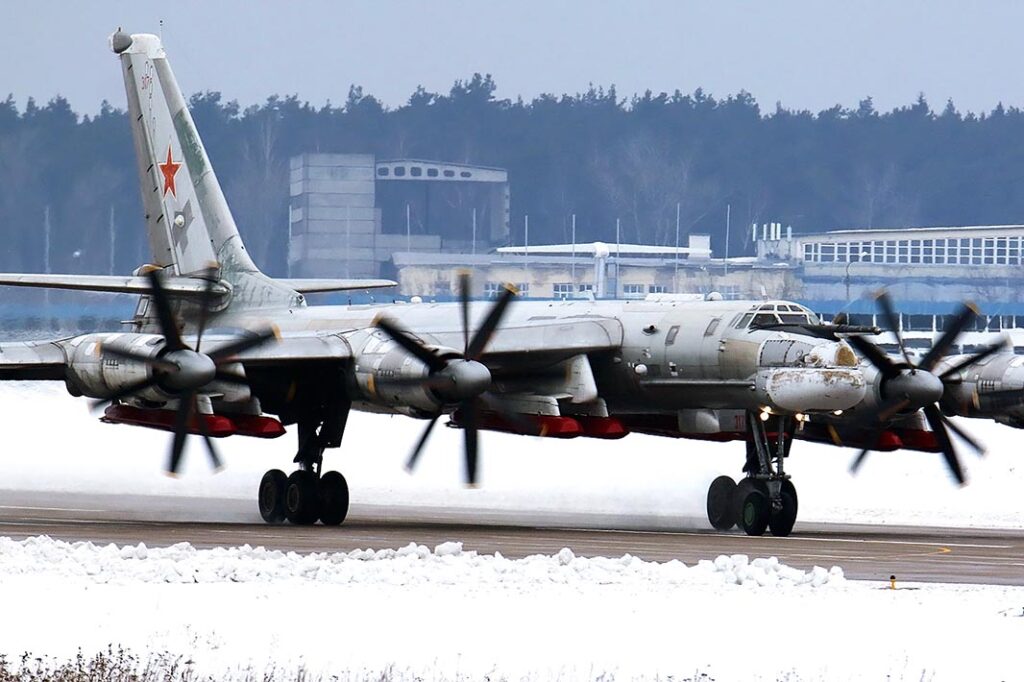
Regardless of the ratios used, Russia has expended an enormous quantity of missiles in Ukraine. Between September 2022 and 2024, Russia launched 11,466 missiles and OWA drones at Ukraine, according to data collected by Ukrainian Data Scientist Petro Ivaniuk.(26) Russia’s attacks reached a total of 4,000 OWA drones launched in May 2025 alone, compared to just 1,100 between May and June 2023.(27) A massive wave of 728 drones was launched against Ukraine on 9 July 2025, with many striking Kyiv. So, the Russian defence industry has clearly expanded to meet this need, and satellite imagery helps track their progress.
Missile propellant
Analysis from the International Institute of Strategic Studies (IISS) published in November 2024 shows that expansions are underway at five sites related to the production of solid propellant used in Russian missiles, and may be underway at a raw materials producer:(28)
- New buildings have been observed at the Morozov plant, which is reported to produce components for the 9M723 Iskander short-range ballistic missile (SRBM) and the Topol-M intercontinental ballistic missile (ICBM).
- The Perm solid propellant site has been refurbished and a significant area at the site cleared. It is involved in the production of most of Russia’s ICBMs.
- The Federal State Unitary Enterprise ‘Federal Centre for Dual Technologies Soyuz’ also shows signs of refurbishment and clearances to make way for new buildings. It is involved in most of Russia’s ballistic missiles as well as tactical systems like the BM-30 Smerch 300 mm multiple rocket launcher (MRL).
- The Kamensky Plant, was undergoing one of the most significant expansions according to the IISS analysis. The analysis showed a significant expansion to the plant’s facilities and a number of new buildings. The site is associated with the production of motors for the Topol-M ICBM
- The Joint Stock Company ‘Federal Scientific Production Centre Altai’ in Biysk appears to be undergoing a similar mix of expansion and refurbishment. The site also supports strategic missiles, including Topol and the Bulava submarine-launched ballistic missile (SLBM).
- Anozit, thought to be Russia’s only manufacturer of the ammonium perchlorate needed for solid missile propellant, reported plans to expand its production of the chemical in 2022.
The continued use of missiles of all classes against Ukraine is the greatest reflection of Russia’s increased missile production. Without it, Russia would not have been able to sustain its strikes at the scale and pace that it has.
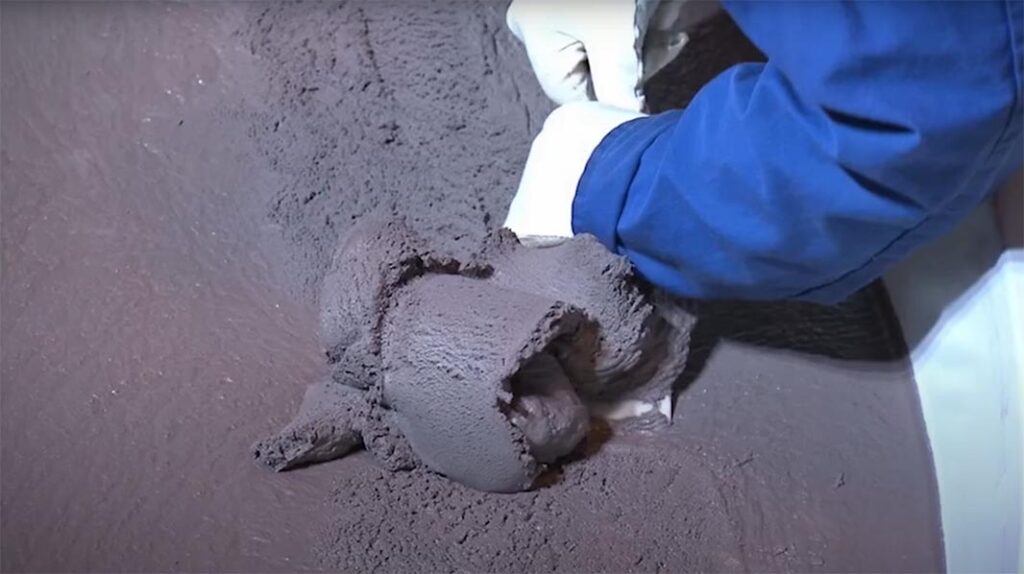
Drones and loitering munitions
Expanded production of drones and loitering munitions has followed an interesting trajectory in that there appears to be a tendency to forcibly acquire shopping malls, evict the existing tenants, and turn the mall into a production facility. The expanded production of drones has become key for Russia as its forces rely on them for most reconnaissance and often also for command and control.
Some of these conversions appear to have been quite successful, with the use of Lancet family loitering munitions being a strong indicator of the expanded production.
| Table 1: Growth in Lancet loitering munition use since 2022 | ||
| Year | Total uses | Average per month |
| 2022 | 100* | 25 |
| 2023 | 778 | 64 |
| 2024 | 1,889 | 157 |
| 2025 | 690 | 98** |
| Notes: *Lancet use appears to have started in August 2022. **Data until mid-July 2025. Data sourced from: lostarmour.info |
||
Thus far, 2024 was a peak year for Lancet use, with several exceptional months including May 2024, which saw more than 300 of the strike drones deployed in support of Russia’s offensive operations in Kharkiv and elsewhere.
Overall, Russia’s wider drone and loitering munition production has seen a truly staggering increase in production quantities since 2022. Select examples of key manufacturer expansion efforts are detailed below:

Alabuga
Location: Alabuga Special Economic Zone, Tatarstan
Products: Shahed/Geran series OWA drones
Description: The production site in the Alabuga Special Economic Zone responsible for producing Shaheds and Gerans has been variously reported on since 2024 when details of the site became public – but thought to have been established the previous year. It has produced thousands of Geran-2s for Russia’s airstrikes against Ukraine, and has continued working despite several successful Ukrainian strikes hitting the factory. Some reports from early 2025 found that African women were working in the factory, often exposed to dangerous chemicals and overall dire working conditions.(29) They had been promised high wages and a good standard of living in recruiting campaigns likely supported by Russia’s intelligence agencies. Then, in June 2025, it emerged that there were plans to send 25,000 North Korean workers to the factory and satellite imagery from the same month appears to show extensive construction of additional accommodation, supporting those reports.(30) Speaking to the BBC, also in June 2025, Artem Dehtiarenko, spokesman for Ukraine’s security service, said that 25,000 Shahed and Geran drones had been produced at the site, with another 20,000 assembled from kits.(31)
NPO IzhBS
Location: Izhevsk
Products: Granat 4 reconnaissance UAV and others.
Description: In 2024, the Scientific and Production Association Izhevsk Unmanned Systems (NPO IzhBS), part of the Kalashnikov Concern, was reportedly in the process of increasing its production of drones by a factor of ten. It had commissioned a new production facility with an area of 5,800 m2, and it later emerged that IzhBS had purchased a shopping mall in Novyi Dom in September 2023.(32) The company plans to add to that production figure by 50% in 2025.(33)
Supercam
Location: Ryazan’
Products: Supercam S350 reconnaissance drone
Description: Supercam (part of a group of companies formally known as Unmanned Systems) reportedly took control of the Solnechny shopping centre in Ryazan in January 2025. Eviction notices were served to existing tenants of the facility, which is reported to have a total area of 17,250 m2.(34) Another company within the group known as Finco LLC appears to represent Supercam internationally and with the Russian MoD, according to Ukrainian investigative group, Molfar.(35) Supercam’s headquarters is in Izhevsk, which is also home to Zala Aero and Izhevsk Unmanned Systems (IzhBS).
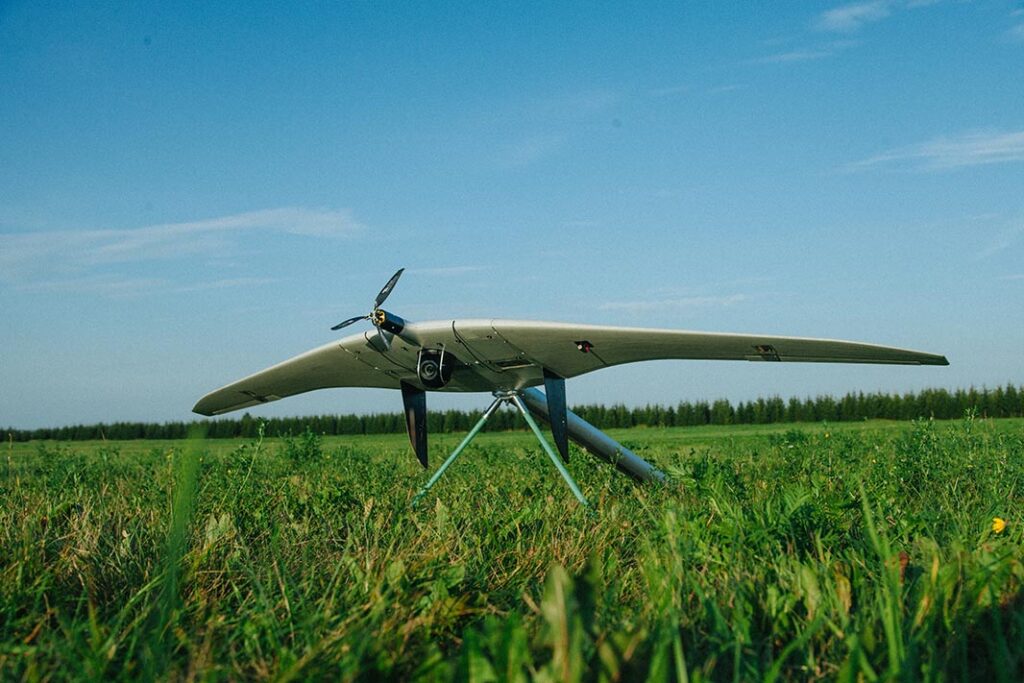
Zala Aero/Aeroscan
Location: Italmas
Products: Lancet loitering munition, possibly Z-16 reconnaissance drones.
Description: Zala Aero led the way for Russian drone manufacturers it seems, in commandeering shopping malls for production facilities. Alexander Zakarov, the company’s chief designer was shown touring the Italmas mall in July 2023, using a Segway to travel the length of the facility that had been established there. The mall was reportedly abandoned because of the COVID pandemic, and subsequently turned into a production facility for Russia’s Lancet loitering munitions.
Regarding the latter case, Zakarov appears to have suggested the mall’s conversion in August 2022, in a presentation that managed to combine imagery of the Soviet past, with a justifiable blow against Western brands, “As a person born and working in a city of gunsmiths, it was bitter for me to see how powerful factories built in Soviet times were being turned into shopping malls one after another…We have developed a concept for converting shopping malls, which before the start of the SVO mainly sold goods of Western brands, into factories for the production of three types of domestic drones,” he was reported to have said.(36) Zakarov later told Russia 1 TV that Lancet production was “organised in the building of a former shopping centre.”(37)
The Italmas mall has since been renamed the ‘Italmas Research and Development Center’ (Научно-исследовательский центр ‘Италмас’). Aeroscan reportedly purchased another shopping mall in Izhevsk called the Stolitsa shopping mall in September 2023, ordering the occupants to vacate the premises by October of that year.(38)
Ammunition
Ammunition, especially artillery ammunition, is central to Russia’s way of war, and its defence industry struggled to meet the immense needs generated by fighting in Ukraine. Analysis based on modelling and publicly reported figures indicates that North Korea was called in to supply in excess of five million rounds of artillery ammunition to resource Russia’s war.(39) This is an enormous amount of ammunition, and comprises roughly 40% of Russia’s 14 million rounds estimated to have been used between August 2023 and April 2025.(40) Russia had strategic reserves and old ammunition to refurbish, combined with new production; it was estimated to be capable of producing between two and four million rounds in 2024.(41) This is also a lot of ammunition, but nothing compared to the potential usage, so expansion became critical.
Biysk Oleum Plant
Location: Biysk
Products: RDX
Description: The Biysk Oleum Plant is located in Siberia and has been reportedly undergoing an expansion since May 2023, with wooded areas at the site cleared and new buildings evident by September 2024.(42) It has since emerged that the site is the subject of a USD 189 million expansion that would deliver a new production line estimated to be capable of producing 6,000 t of RDX per year, which is enough for around 1.2 million 152 mm artillery rounds.(43)
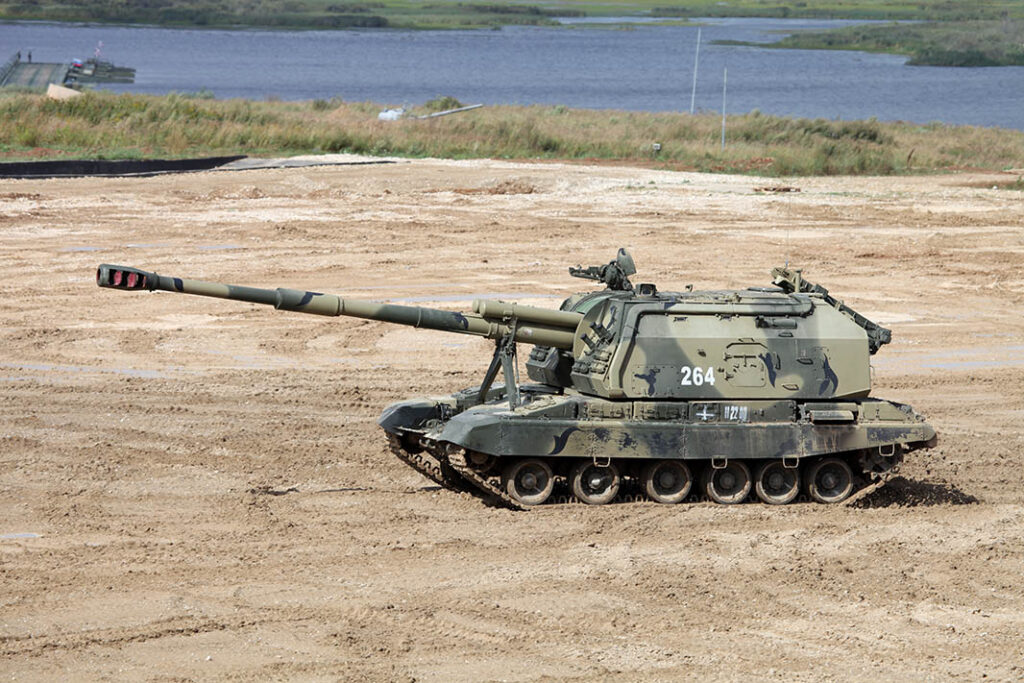
Plastmass Plant
Location: Kpoeysk
Products: Artillery ammunition and unguided rockets
Description: Plastmass is a large ammunition facility producing a variety of different munitions for the Russian armed forces. It was expected to start a modernisation and refurbishment process in 2021 that would add 4,000 m2 to its production capacity, but it was unclear if this had progressed by October 2024. However, Rostec did report a five-fold increase in the plant’s production in June 2024 with another 20% expected to follow the year after. It also has extensive recruitment requirements and appears to be working either with or towards three-shift schedules to maximise its output.(44)
Tambov Powder Plant
Location: Kotovsk
Products: Propellent for 122 mm and 152 mm artillery rounds as well as explosives.
Description: Tambov is a Soviet legacy plant producing pyroxylin powders for various ammunition types. It had hired 500 additional staff by the end of 2022, and in 2023 was transferred to Rostec’s ownership in 2023 to facilitate improved production and the site’s expansion. Subsequently, the company planned to hire 3,000 more staff by 2025. It was also undergoing refurbishment and modernisation, including expansion of its facilities through a contractor called Gidroavtomatika.(45) Tambov has been targeted with Ukrainian drone strikes, the outcome of which remains unclear.
Looking ahead
The above provides a small insight into Russia’s defence industry, which is estimated to include at least 1,400 entities.(46) Nevertheless, it does provide an indication of the expansion underway and what is happening to increase the country’s production. However, Russia’s defence exports have collapsed since 2022 as the state-mandated support for the War in Ukraine and interest rates on domestically-available capital made Russia unattractive to foreign militaries, and unprofitable for the defence industry itself.(47)
There is also the element of the social impact of all this spending and government approach, which has militarised Russian society. Many Russians now work in the defence industry, an estimated 4.5 million in 2024 according to RUSI, although it is worth noting that Putin gave a figure of 3.5 million in February 2024.(48) Either way, Russia is militarising, with even school children now being taught to build and fly FPV drones, others to dig trenches and fire assault rifles.(49) A raft of policies is aimed at increasing birth rates, with rewards offered to young Russian women that fall pregnant and give birth, all of this enmeshed in a wrapper of patriotism.(50)
This all matters because these are policies that will be hard to reverse. Moreover, these policies will leave an indelible mark on Russia, its economy, and its people. It potentially sets the stage for decades of further confrontation and potentially conflict with NATO. Whereas the Russian defence industry of 2021 probably could not have supported a prolonged conflict with NATO, the one that looks likely to emerge in 2027 or 2028 almost certainly could.
Sam Cranny-Evans
Author: Sam Cranny-Evans is a consultant and journalist based in the UK. He specialises in land warfare and the technologies shaping the way armed forces fight. Sam previously worked at Janes and is a RUSI associate fellow.
(1) Russia and the Arms Trade | SIPRI
(2) Russian Performance in the Russo-Georgian War Revisited
(3) Russia arms exports to hit record USD 8 bn in 2008 – The Economic Times; The Role of Arms Exports in the Foreign Policy of the Russian Federation
(4) Russian Units Kill Georgian Rebels in Clash – The New York Times
(5) Russians Cope With Arc of Crises – CSMonitor.com
(6) Heroes of Tamish
(7) MOLDOVAN FORCES SEIZE A KEY TOWN – The New York Times
(8) The War in Tajikistan Three Years On | United States Institute of Peace
(9) The War in Chechnya: A Military Analysis
(10) Russian Participation in Peace Operations
(11) Rebels say they’re out of Dagestan; Russia says war continues
(12) Chechnya | History, Location, Religion, & Facts | Britannica
(13) If New Looks could kill: Russia’s military capability in 2022
(14) All materials – The Russian Government
(15) Russian machine tool industry – Prospects for a turnaround?
(16) Серовский мехзавод модернизирует производство военной продукции – РИА Новости, 02.03.2020
(17) https://x.com/kamilkazani/status/1792197089935421822
(18) Thales Supplies Russia With Thermal Imaging Cameras – Army Technology
(19) Winning the Industrial War: Comparing Russia, Europe and Ukraine, 2022–24 | Royal United Services Institute
(20) Full article: Russian defense spending after 2010: the interplay of personal, domestic, and foreign policy interests
(21) The Russian Wartime Economy
(22) Sergey Chemezov reported to Vladimir Putin on Rostec’s financial results for 2024 – ВПК.name
(23) Italy Military Expenditure
(24) Third-best option: ESCU’s new report on China’s role in Russian maintained access to critical industrial equipment.
(25) https://www.calibredefence.co.uk/shahed-and-geran-the-evolution-of-russias-deep-strikes/
(26) Russian Firepower Strike Tracker: Analyzing Missile Attacks in Ukraine | Projects | CSIS
(27) Record number of drone attacks signals dangerous shift in war – BBC News
(28) Russia is expanding its solid-propellant motor-production facilities
(29) Exploited in Russia: African women forced to make drones – DW – 06/14/2025
(30) With 25,000 North Koreans Sent to Alabuga, More Workers Will Make Shaheds Than Tanks and Tu-160M Bombers Combined | Defense Express; Russia Expands Yelabuga Drone Plant, Builds Housing for Foreign Workers
(31) Record number of drone attacks signals dangerous shift in war – BBC News
(32) Izhevsk Unmanned Systems will increase the production of drones tenfold | AKM EN; Shopping Malls in Central Russia Converted Into Drone Plants – The Moscow Times
(33) Kalashnikov Concern increases UAV production volumes – RuAviation
(34) Торговый центр «Солнечный» в Рязани готовится к закрытию; Major Russian drone maker expands production to Ryazan shopping center
(35) Russia’s Drone Production Loopholes: How Sanctions Fail to Stop UAV Manufacturers
(36) Главный конструктор Zala Aero предложил переоборудовать ТЦ под производство беспилотников – Ведомости (Zala Aero’s Chief Designer Suggests Re-Equipping Shopping Mall for UAV Production)
(37) Российский БПЛА «Ланцет»: характеристики, производство, эффективность на Украине : Оружие: Наука и техника: Lenta.ru (Russian drone “Lancet”: characteristics and efficiency. Why Ukraine called “Lancet” the main threat)
(38) Shopping Malls in Central Russia Converted Into Drone Plants – The Moscow Times
(39) Brothers in Arms: Estimating North Korean Munitions Deliveries to Russia | Open Source Centre
(40) Brothers in Arms: Assessing North Korea’s Contribution to Russia’s War in Ukraine | Royal United Services Institute
(41) Inside Russia’s 2024 military-industrial complex
(42) The Cost of Inaction: Russia’s Defence Industry Redevelopment – Tochnyi.info
(43) Russia building major new explosives facility as Ukraine war drags on
(44) https://static.opensourcecentre.org/assets/osc_ore_to_ordnance.pdf
(45) The Cost of Inaction: Russia’s Defence Industry Redevelopment – Tochnyi.info
(46) RUSI: Russian Defense Industry Employs Approximately 4.5 Million People – Militarnyi.
(47) Russian Arms Exports Collapse by 92 Percent as Military-Industrial Complex Fails – Jamestown; Russia’s high interest rates make export contracts unprofitable, says Rostec head | Reuters
(48) Winning the Industrial War: Comparing Russia, Europe and Ukraine, 2022–24 | Royal United Services Institute; ‘A lot higher than we expected’: Russian arms production worries Europe’s war planners | Russia | The Guardian
(49) In Militarizing Push, Russian School Children To Build Drones; In Militarizing Push, Russian School Children To Build Drones
(50) Russia bets on patriotism to address demographic crisis


